TERMS: A Deep Dive into College Basketball GM Contracts
Incentive Bonuses, Complementary Cars, Buyouts, and more
First-time readers, thanks for checking out The College Front Office. Previous subscribers, I appreciate you more than you know.
Over the last couple of weeks, I have been working diligently to procure contracts from universities, aiming to understand the value colleges place on exactly what my publication is named after: The College Front Office.
With the emergence of NIL in 2021 and the subsequent pay-for-play NIL deals that followed, college sports underwent a fundamental shift from an amateur model to a quasi-professional one. Before 2021, the college basketball player valuation model was binary: a student-athlete who was deemed worthy of joining a program was offered either a scholarship or a walk-on position.
Virtually overnight, that simplistic model disappeared. Colleges had not only to determine who is worthy of participation, but also value their on-court contributions monetarily — a science that pro teams have spent tremendous financial resources on perfecting for decades.
The importance of player valuation, however, is something some schools realized much quicker than others. Still, many schools have yet to fully invest in sport-specific general managers or other personnel with experience in this field, partially due to the unique dynamic of NIL 1.0.
Until this season, NIL was unregulated and uncapped. The focus for many programs was on fundraising, rather than efficiency. If a top program could lean on its alumni network and raise a hefty NIL warchest, the ability to offer lucrative contracts to a team of transfer mercenaries seemed an easier and more attractive blueprint than playing the college basketball version of Moneyball.
This strategy does not always pan out. Washington and Kansas State, two well-resourced programs, threw record-breaking compensation packages (at the time) to top transfers. Both schools missed the NCAA tournament this past season, and both players who received multi-million-dollar deals experienced significant regression at their new schools.
Meanwhile, schools like UCSD were able to punch far above their weight last season by recruiting overlooked prep talent, as well as JUCO and Division II transfers, all with team budgets that are a fraction of what top college players earn.
Now, with recent changes to college sports stemming from the House v. NCAA settlement, all college basketball teams, not just mid-majors, will be constrained by finite budgets.1 Without the ability for the wealthiest and most connected schools to grossly outpay their competition, the need for player valuation and spending efficiency is paramount.
In response, colleges have begun hiring general managers (or personnel under different titles with experience in athlete valuation) to help navigate a professional collegiate sports model. Many come from the ranks of the NBA, including North Carolina State GM Andrew Slater (Thunder), University of Utah GM Wes Wilcox (Kings), Syracuse GM Alex Kline (Knicks), and others.
Other GMs are former college basketball head coaches themselves, including Villanova GM Baker Dunleavy (Quinnipiac), Penn State GM Scott Pera (Rice), and UCSD GM Bill Carr (UCSD), among others.
The title of general manager has been frequently passed around in the college athletics space for various job functions, and often, those who hold it do not perform actual front-office work. This can be pretty confusing. There are three major permutations of a college sports GM, but only one will be the focus of this article:
1) The sports-specific GM: a person who has some combination of specific knowledge in scouting, recruiting, contract formation, capology, and negotiations— even within the sport-specific general manager archetype, duties, responsibilities, and pay vary widely.
THESE ARE THE CONTRACTS RELATED TO FRONT OFFICE FUNCTIONS… AND THUS, THE ONES WE WILL BE EXAMINING.
2) The NIL GM: This position emerged at the beginning of NIL and is now primarily responsible for securing bona-fide endorsement opportunities for athletes. Depending on the institution, this position can be housed within a NIL collective or the athletic department. If the NIL GM is in-house, other responsibilities are tied to athlete NIL education and compliance. Often, these people have minimal involvement in front-office operations. Rather than focus on one sport, they typically oversee the entire athletics department.
3) The Multi-Media Rights (MMR) GM: This person is responsible for monetizing media-related assets and leveraging corporate sponsors to benefit the athletic department. They do not have any involvement with front-office operations; they only share a title.
WHILE SEPARATELY IMPORTANT, WE WILL NOT BE LOOKING AT NIL GM OR MMR GM CONTRACTS.
The sport-specific GM position is a newly created one, and without much guidance, schools have approached the creation and scope of their “front-office” personnel in very different ways.
As a disclaimer, I will not be providing the individual’s name or school with the contract, only their title and conference. Although the information is in the public record and these individuals willingly accepted jobs at public universities, something still feels wrong to me about directly providing contractual details of people without their permission.
Feel free to reverse-engineer, speculate, or obtain the contracts yourself; this is as far as I’ll hold your hand.
Some notes about vast trends seen in all deals before we get into the nitty gritty:
1) Basketball GMs report to the head coach as a member of the staff. In college, GMs are the subordinates of the head coach, and this is often explicitly stated in their contract.
This stands in contrast to the NBA, where the GMs (or President of Basketball Operations) directly report to the owner and sometimes have hiring/firing control of the head coach.
In college football, GM as a member of the coaching staff structure is broadly similar; however, Bay Area GMs Andrew Luck (Stanford) and Ron Rivera (Cal) operate outside of the coaching staff and have more absolute control over the program, like a traditional professional GM dynamic. To my knowledge, this has not yet appeared in college basketball, but it may emerge soon.
2) Even at the high-major level, most schools still have not filled a formal “general manager” role. That said, many schools are leveraging other titles and positions to oversee front-office duties, such as Director of Player Personnel, Chief of Staff, and Director of Strategy, among others.
At the mid-major level, where resources for revenue-sharing are harder to come by, most schools are weighing the cost of adding a sport-specific GM — which, as you will see, can be quite costly — or utilizing those funds towards athletic compensation while tasking existing staff members with front-office responsibilities.
Okay, that was a lot of background; now, onto the contracts:
Atlantic Coast Conference:
ACC School 1: Director of Recruiting (Functionally a GM role):
- Term: 1 year
- Base salary: $160,000
- Fringe Benefits: $960 phone stipend
- Incentive Bonus: Maximum: $40,000 (25% of base salary). Matrix below:
ACC School 2 - General Manager:
Term: 1 year
Base Salary: $200,000
Signing Bonus: $12,000
Media Relations Pay: $50,000 (see below)
Termination/Mitigation: If fired without cause before the end of the one-year agreement, GM will retain their base pay and media pay; if the GM accepts an athletic position elsewhere, their base pay from the original school will be reduced by their new salary — unlike other contracts, there is no duty for the GM to make an effort to seek new employment.
ACC School 3 - General Manager:
Term: 2 years
Base Salary: $400,000
Fringe Benefits: $5,000 car stipend; basketball tickets (home); $15,000 moving expenses.
Incentive Bonus: Maximum $100,000 (25% of base salary):
ACC reg. season champions $16,667;
ACC Tournament finals appearance $33,333;
March Madness Sweet 16 appearance $33,333;
National Championship $16,667
Liquidated Damages (Buyout): If the GM accepts any other employment they will owe the university damages that vary by date of leave (unless waived, payment is owed within 60 days of voluntary termination):
Big East Conference:
Big East School 1 - General Manager:
*The contract I was able to procure was from the 2024-25 season, where this staff member had not yet been formally designated with the title of GM. As seen next in a similar SEC contract (SEC school 1), compensation did not change substantially year-to-year when job functionality remained the same, but only the individual’s title changed.
It appears as though re-negotiations are still ongoing for this GM, as two seperate one-month long extensions to the 2024-25 terms have been created, with the most recent extension terminating on June 30, 2025.*
Term: 1 year
Base Salary: $375,000
Fringe Benefits: A lot of free tickets and companion travel to two away games and all foriegn tours (see below).
Tickets:
Companion travel:
Termination/Mitigation: If fired without cause before the end of the term, full base salary compensation will be provided. The coach maintains a duty to “excersise reasonable dilligence” in finding alternative employment. If the GM finds another position, his base salary compensation will be reduced by the salary of his new position.
Incentive Bonus: Maximum $50,000 (13.3% of base pay) — GM will be awarded cummulative bonuses for different milestones in the NCAA championship:
Southeastern Conference:
SEC School 1 - General Manager
Term: 2 years - extension of previous role
Base Salary: $507,500
Fringe Benefits: This GM’s extension earned them a courtesy car for business and personal use provided by the university, in addition to benefits found in their initial appointment contract, seen below:
Incentive Bonus: Maximum $152,250 (30% of base salary). Matrix below:
SEC School 2 - General Manager
Term: 2 years
Base Salary: $100,000 year one; $250,000 year two
Signing Bonus: $15,000
Fringe Benefits: $6,000 car stipend, $5,000 moving allowance
Incentive Bonus: Maximum compensation totals 27% of base pay
One unique part of the incentive compensation structure is the tethering of payouts to the team’s four-year Academic Progress Rate. Failure to hit the 930 mark prescribed in the contract often coincides with a postseason ban.
Mitigation: If terminated with cause, the GM will be entitled to receive base payment from the university, provided they have made a “good-faith, diligent” effort to mitigate by seeking employment elsewhere.
Big Ten Conference:
Big Ten School 1 - Chief of Staff:
Term: 1 year
Base Salary: $175,000
Termination: If fired without cause, the contract is fully guaranteed. If the head coach is fired, the GM is automatically terminated. Interestingly, if the head coach is fired for cause, it limits the severance pay of the GM to only one month’s salary (see below).
One other provision of the contract is institutional control over media appearances and endorsement opportunities. This is standard within most of the high-major contracts I have reviewed and almost always require the consent of both the head coach and the athletic director.
Big Ten School 2 - Director of Player Personnel:
Term: One year
Base Salary: $140,000
Nothing of note to report here; no incentives, fringe benefits, or anything beyond term length and compensation.
Big Ten School 3 - General Manager:
Like some other contracts we have looked at, this deal was signed before the title of general manager was given to the indivdual. Nothing indicates that terms have changed in this process, only the individuals title.
Term: 2 years
Base salary: $150,000 (prorated to eight months); rest of term $175,000
Incentive Bonus: Maximum $70,000 (40% of base pay); matrix below:
Termination/Mitigation: Like others, if fired with cause the university owes the GM no further obligations under the contract. If fired without cause the coach is entitled to his pay thorughout the term with a duty to mitigate. However, this institution goes one step further to ensure that mitigation efforts with a new employer are not structured to take exploit the terms of mitigation:
Mid-Majors:
Mountain West (for now) School 1 - Chief of Staff:
- Base salary: $125,000
- Fringe Benefits: $7,500 moving; $1,200 annual communication stipend
- Incentive Bonus: $10,417 if the team makes March Madness
The employment is at-will and appears to have no protections for continued pay in the event that the GM is terminated before the end of the term — either with or without cause.
IN CONCLUSION:
First off, thank you for making it this far. I appreciate your readership.
Frustratingly, I know that as soon as I publish this article, many of the schools I have been harassing will flood my inbox with contracts full of compensation figures, buyout clauses, and car stipends. Alas, I still have to move forward knowing this reality.
I plan on providing both a part two of this article and a companion piece for college football GMs, a position that has been integrated at a much quicker pace than basketball.
If you are a GM or occupy another front-office position at a private university and would like to contribute to this collection of data, I would welcome your contact and am happy to connect. Like all contracts listed here, I promise to do my best to protect your anonymity.
The House v. NCAA settlement has introduced several new aspects to college sports, effective this season: direct revenue sharing between schools and their athletes, an annual revenue-sharing compensation cap ($20.5 million per school for all sports in 2025), auditing of third-party NIL pay-for-play deals (with no cap manipulation), and roster limits.
Noah Henderson is the Director of the Sport Management Program and a Clinical Instructor at Loyola University Chicago’s Quinlan School of Business. His work explores the intersection of law, economics, and the social consequences of college athletics, particularly in the areas of name, image, and likeness (NIL), athlete labor rights, and sports gambling.
Henderson helped amend Illinois’ NIL legislation and played a direct role in establishing early frameworks that facilitated the legal payment of college athletes at Student Athlete NIL. He continues to advise athletic departments, brands, and sports agents nationwide on NIL policy, legal compliance, and best practices.
He contributed extensively to Sports Illustrated’s NIL Daily, where his reporting and commentary helped shape public understanding of the evolving business of college athletics. His insights have been featured by ESPN, NPR, CNN, PBS, Sportico, the Chicago Tribune, and others.
Henderson holds a Juris Doctor from the University of Illinois College of Law and a degree in Economics from Saint Joseph’s University, where he was a four-year letter winner on the golf team.

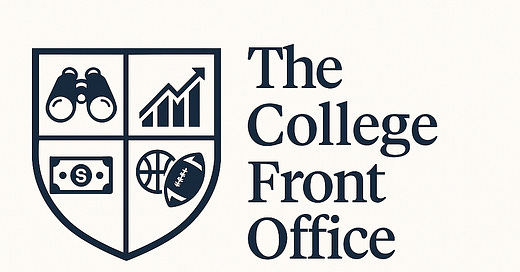


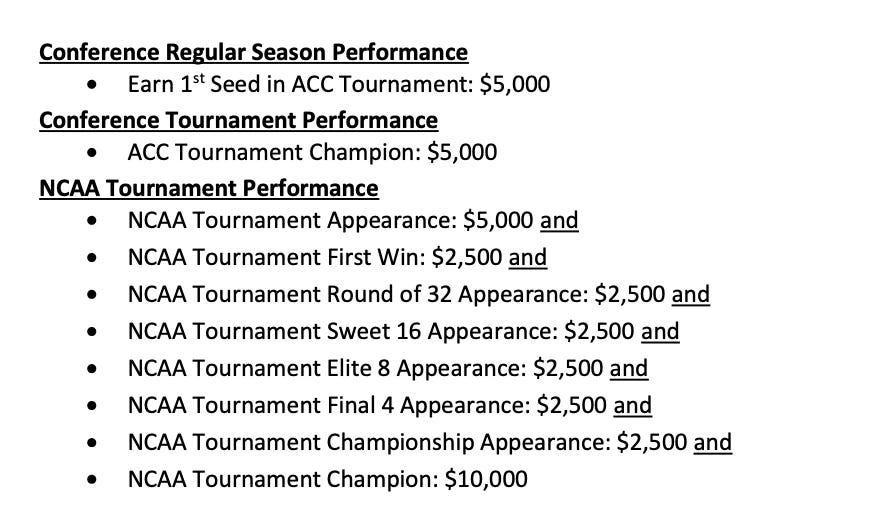




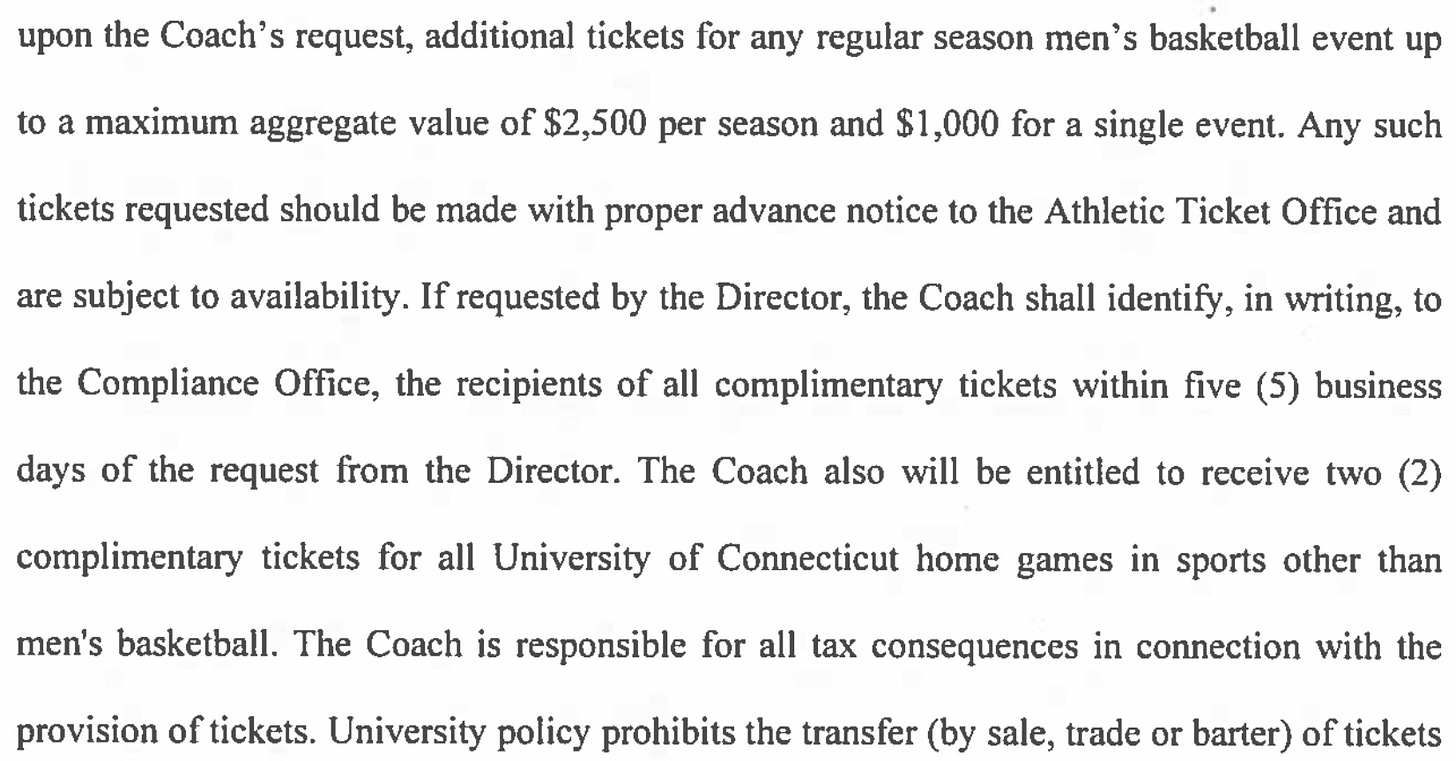



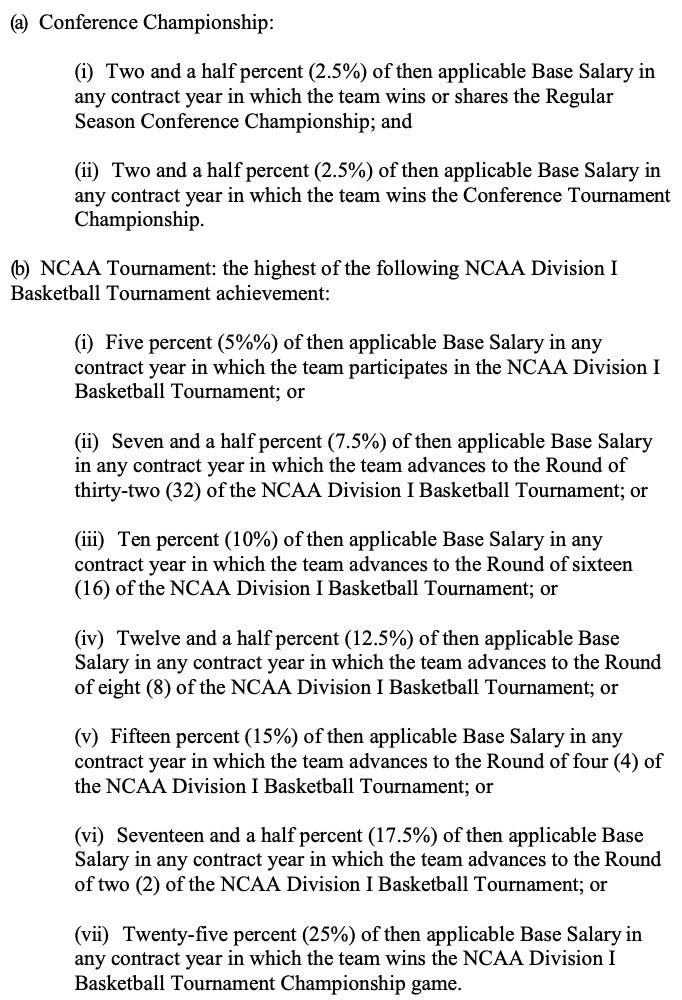
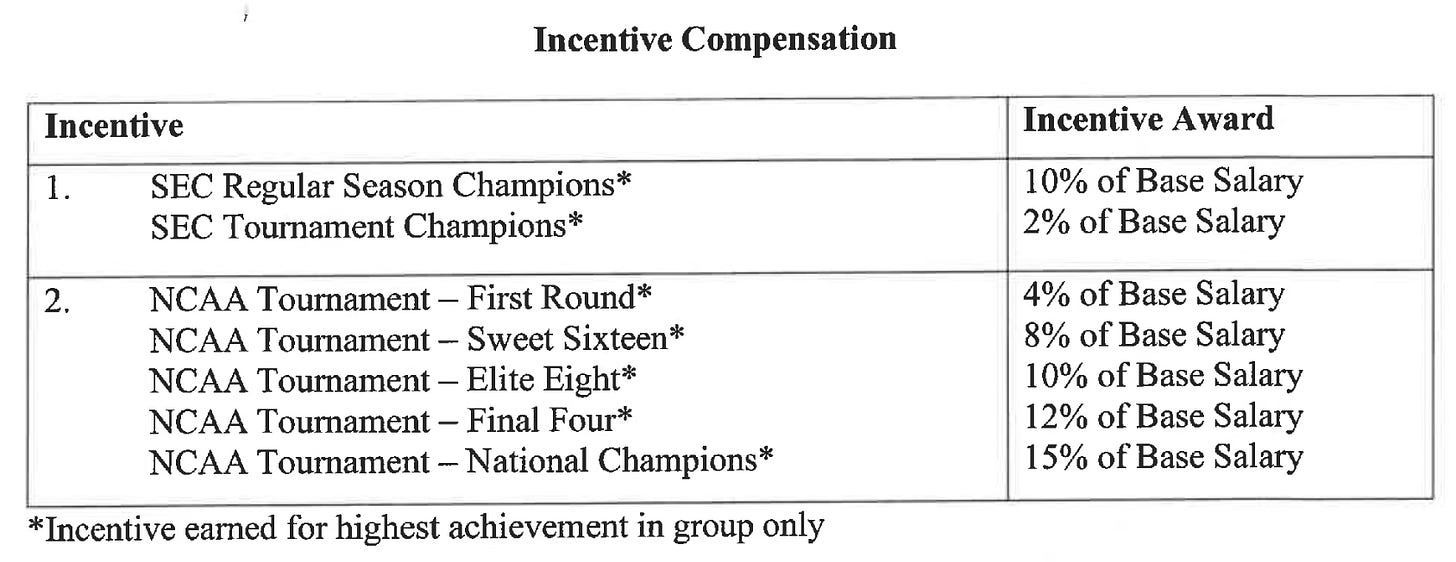
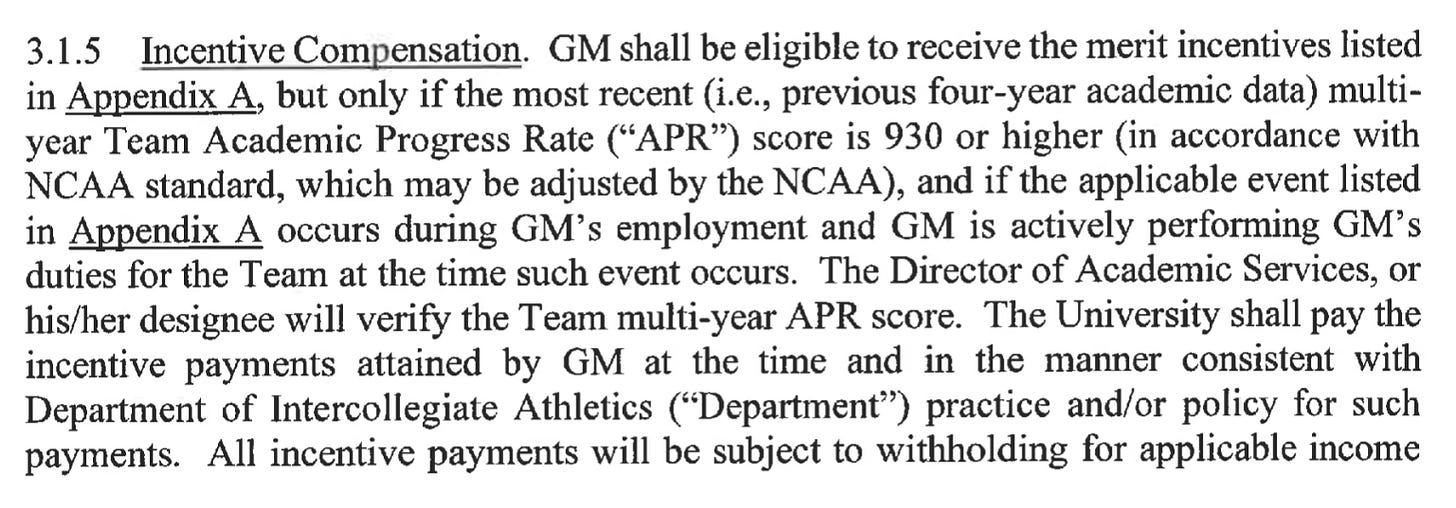





Wow, thank you for sharing! I've been wondering about this type of position and what the contracts actually look like under the hood.
Once you get to college football...I can only imagine what that looks like.